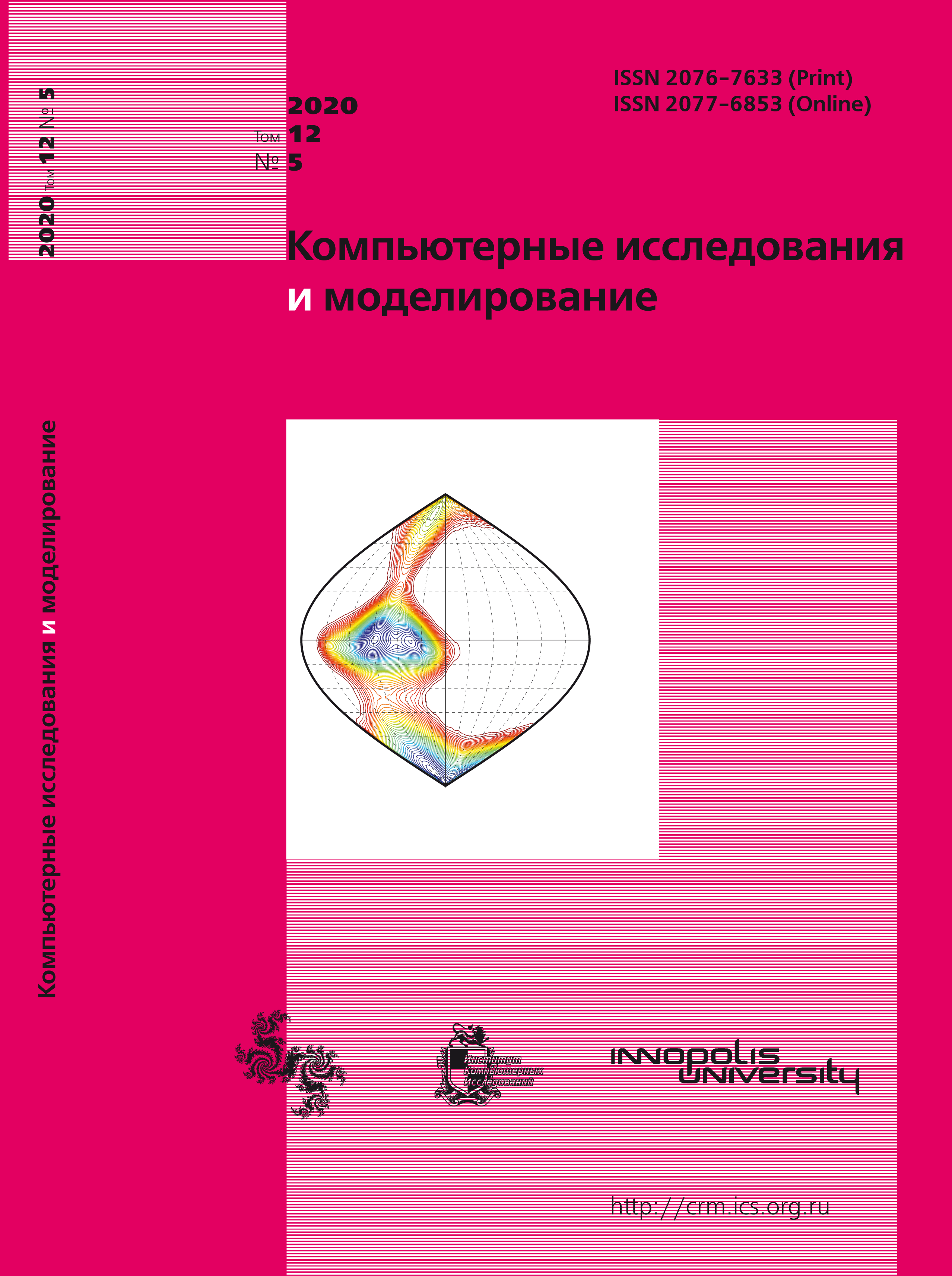All issues
- 2025 Vol. 17
- 2024 Vol. 16
- 2023 Vol. 15
- 2022 Vol. 14
- 2021 Vol. 13
- 2020 Vol. 12
- 2019 Vol. 11
- 2018 Vol. 10
- 2017 Vol. 9
- 2016 Vol. 8
- 2015 Vol. 7
- 2014 Vol. 6
- 2013 Vol. 5
- 2012 Vol. 4
- 2011 Vol. 3
- 2010 Vol. 2
- 2009 Vol. 1
Method for prediction of aerodynamic characteristics of helicopter rotors based on edge-based schemes in code NOISEtte
 pdf (1502K)
pdf (1502K)
The paper gives a detailed description of the developed methods for simulating the turbulent flow around a helicopter rotor and calculating its aerodynamic characteristics. The system of Reynolds-averaged Navier – Stokes equations for a viscous compressible gas closed by the Spalart –Allmaras turbulence model is used as the basic mathematical model. The model is formulated in a non-inertial rotating coordinate system associated with a rotor. To set the boundary conditions on the surface of the rotor, wall functions are used.
The numerical solution of the resulting system of differential equations is carried out on mixed-element unstructured grids including prismatic layers near the surface of a streamlined body.The numerical method is based on the original vertex-centered finite-volume EBR schemes. A feature of these schemes is their higher accuracy which is achieved through the use of edge-based reconstruction of variables on extended quasi-onedimensional stencils, and a moderate computational cost which allows for serial computations. The methods of Roe and Lax – Friedrichs are used as approximate Riemann solvers. The Roe method is corrected in the case of low Mach flows. When dealing with discontinuities or solutions with large gradients, a quasi-one-dimensional WENO scheme or local switching to a quasi-one-dimensional TVD-type reconstruction is used. The time integration is carried out according to the implicit three-layer second-order scheme with Newton linearization of the system of difference equations. To solve the system of linear equations, the stabilized conjugate gradient method is used.
The numerical methods are implemented as a part of the in-house code NOISEtte according to the two-level MPI–OpenMP parallel model, which allows high-performance computations on meshes consisting of hundreds of millions of nodes, while involving hundreds of thousands of CPU cores of modern supercomputers.
Based on the results of numerical simulation, the aerodynamic characteristics of the helicopter rotor are calculated, namely, trust, torque and their dimensionless coefficients.
Validation of the developed technique is carried out by simulating the turbulent flow around the Caradonna – Tung two-blade rotor and the KNRTU-KAI four-blade model rotor in hover mode mode, tail rotor in duct, and rigid main rotor in oblique flow. The numerical results are compared with the available experimental data.
Copyright © 2020 Bobkov V.G., Abalakin I.V., Kozubskaya T.K.
Indexed in Scopus
Full-text version of the journal is also available on the web site of the scientific electronic library eLIBRARY.RU
The journal is included in the Russian Science Citation Index
The journal is included in the RSCI
International Interdisciplinary Conference "Mathematics. Computing. Education"






